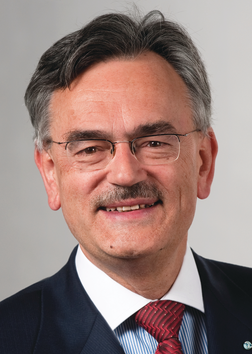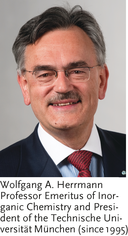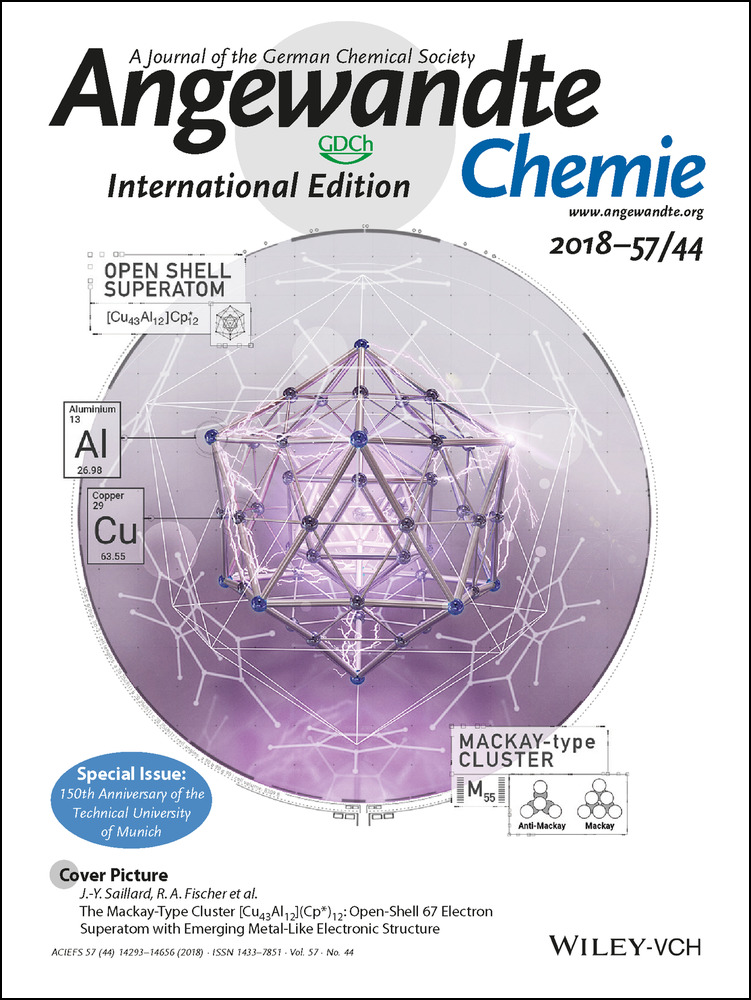Editorial: 150 Years of the Technische Universität München: Innovation since 1868†
English translation by Dr. Staci von Boeckmann, TUM.
Graphical Abstract
“… On Easter Sunday 1868, the decree founding the Polytechnische Hochschule München (today′s Technische Universität München; TUM) was signed by the 23-year-old Ludwig II, King of Bavaria. Entrepreneurial spirit has been a hallmark of the TUM from the start, and it was the first German university to have a branch abroad. Interdisciplinary research is key, not least in the Department of Chemistry …” Read more in the Guest Editorial by Wolfgang A. Herrmann.
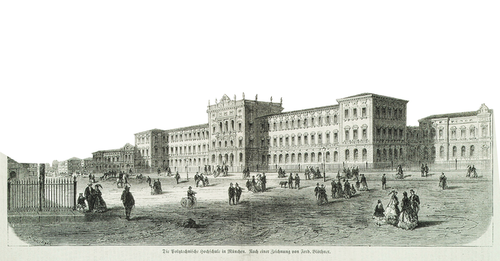
The Polytechnische Hochschule München (1872).
Prelude: World Exhibition Paris 1867
Yet, Ludwig II did not live merely in a dream world filled with castles. He was both a patron of the arts, supporting the work of Richard Wagner, whose Mastersingers of Nuremberg premiered in Munich in that same year of our birth as an institution, and an avid promoter of technological progress. What was his key experience? The young king had traveled with his aged grandfather, King Ludwig I (1786–1868), long since retired, to the World Fair of 1867 in Paris, and, oh, what wonders he encountered there! The first hydraulic elevator, the gas engine, reinforced concrete, aniline paints, aluminum and indium, the internal combustion engine by Nikolaus Otto and Eugen Langen. Hard on the heels of these most certainly formidable impressions, he was to put his seal on the foundation of today's TUM — a “dream” that had been so long and carefully prepared by others. Fatefully, our institution would not belong to the Ministry of the Interior for Church and School Affairs. No, we were entrusted to the Ministry of Trade and Public Works under Gustav von Schlör (1820–1883) from the Upper Palatinate, who robustly advanced the industrialization of Bavaria.
“To ignite the spark of science in the commercial and industrial world” is how my first predecessor, the geodesist Carl Max von Bauernfeind (1818–1894), summed up the mission of the engineering school. Even today, it could not be more beautifully and aptly said.
We were fortunate with our pioneering members, for among the founding professors selected to teach the 301 students was 26-year-old Carl Linde (1842–1934). He would soon invent the refrigerating machine and air liquefaction, build the first cooling units for the Munich brewery of Gabriel von Sedlmayr, develop the refrigerator, and founded today's Linde AG — our very first spin-off (1879), whose international success story began at its inception.
Entrepreneurship is in Our Genes
Entrepreneurial spirit has been a hallmark of the TUM right from the start — a spirit made manifest most recently in numerous programs to support brand development. Entrepreneurial thinking and doing is a central survival strategy of leading technological nations, particularly in the age of digital technology. Over the past two decades, the TUM has generated more than 800 companies that today, insofar as they still exist, provide over 15 000 jobs. Eight of our spin-offs are now publicly traded. Take, for example, Celonis. This start-up developed software that collects and analyzes company data in order to detect inefficiencies. Celonis has just surpassed “unicorn” status of a billion dollar valuation. Then, there is Pieris, a company founded by Prof. Arne Skerra based on his discovery of anticalins out of his research in the field of biochemistry, and Amsilk, co-founded by Prof. Thomas Scheibel (now at the University of Bayreuth), who became known for the biotechnological production of spider silk, which he developed as a group leader in our Department of Chemistry.
Entrepreneurship at universities must not only be tolerated but promoted in a welcoming culture. Entrepreneurship constitutes the most important characteristic of great science: the willingness to take risks. A top university, then, is never the extended workbench of industry but an innovator of society and, thus, its most effectual servant. At TUM, we embrace research that operates according to the principle of “high risk, high reward”.
Internationally Fit
The TH München (as it was known from 1877; it became the TUM in 1976) quickly gained a reputation as a technological innovator, and thus it attracted students from abroad, particularly from eastern Europe. Aurel Vlaicu of Romania, who studied mechanical engineering here, is now celebrated as a national hero in his native country for his pioneering work in the development of aviation technology. The chemist Emil Erlenmeyer rendered such outstanding service as a teacher of Russian students that the Czar awarded him the prestigious Order of St. Anne, which was also bestowed on Goethe. Today, almost 11 000 international students (ca. 26 % of the student population), mainly from Asia and Europe, are enrolled at TUM. With the opening of TUM Asia Pte Ltd in Singapore (2002), we became the first German university to have a branch abroad — and we had the right instinct. In the meantime, our Singapore branch is now home to TUM Create, a major project of the Singapore Research Foundation to conduct research into transportation systems of the future (including electromobility) in megacities in tropical regions. More than 100 TUM junior scientists are currently working on their doctoral theses in Singapore, thus broadening both their scientific and cultural horizons. Significantly, the German chemical industry has supported our, meanwhile award-winning, international adventure right from the start with a scholarship program that simultaneously gives it access to some of the most highly trained graduates in South-East Asia.
Interdisciplinarity=Effective Synergy
Disciplinary strengths are necessary but rarely decisive for success. In an age of increasingly more complex scientific and technical challenges, the ability to communicate and cooperate interdisciplinarity is essential. Cross-sectional sciences, the best example of which is chemistry with its wide-ranging industrial background, are the chief beneficiaries in this regard.
Our Department of Chemistry has recognized this and made it the focus of its development policy. Though the department is already one of the world's leading research institutions, it continues to prepare for the ever greater challenges of the future. Moving beyond the classic segmentation “AC–OC–PC–TC” (inorganic–organic–physical–technical chemistry) the last bastion of simple minds, a successful policy of strategic orientation and faculty appointment responds to challenges that call for their interconnection, above all, beyond the department's traditional faculty portfolio. Electrochemistry is a good example. After this teaching and research area, once vast and formidable in Germany, was largely ignored as outdated (a situation to which the automotive industry with its reluctance towards electromobility unfortunately made a decisive contribution), we created the new Chair of Technical Electrochemistry in 2009 in order to acquire competence in this area and to interact with the engineering world. At the same time, strong innovative forces in automotive production and energy research began to take effect in our engineering departments, so that we have now distinguished competencies in all subdisciplines and are also capable of collective action across disciplines.
We pursue this path in all fields of knowledge in which our expertise is demanded by the grand societal challenges. While professional isolation may bring self-satisfaction, it inevitably leads to insignificance in international competition. The issues of the century are easy to list: health and nutrition; natural resources; energy, climate, environment; information and communication; mobility, infrastructure, housing—but much harder to resolve in research. The burning questions of people around the globe will be more quickly answered the sooner we leave behind the compartmentalization of traditional disciplinary thinking and learn to create synergies where there is potential for added value. This willingness and ability can make the German scientific system viable for the future. This mission is made manifest in the interdisciplinary research centers of the TUM Department of Chemistry: catalysis research, protein research, the nuclear magnetic resonance center.
Stant Cuncta Labore—Everything Endures through Work1
This Special Issue shows, once again, that Angewandte Chemie, a leading international chemistry journal, is firmly anchored in the TUM, just as we are part of it. I myself have made 102 contributions to its pages during my time as an active researcher. Angewandte Chemie has also continuously expanded its horizons, spurring new fields of research, even new research philosophies, on an interdisciplinary and international scale. Its “spin-off” and sister journals have themselves become veritable success stories, and we owe a great deal to Peter Gölitz, my friend and the journal's long-time Editor in Chief.
What began in the founding year of 1868 with Emil Erlenmeyer and reached its zenith in Nobel Prizes for Hans Fischer (1930), Ernst Otto Fischer (1973), Robert Huber (1988), and Johann Deisenhofer (1988; Figure 2),2 is now being continued by a generation of industrious contemporary scholars, who are leaving their own marks on the field. Each of the many contributions to this Special Issue sends a signal into the future, each of them reaches beyond the boundaries of individual research areas to work in an interdisciplinary manner, and each exemplifies the highest international standards. Authors from outside our institution, such as Matthias Beller, whose academic career began as a professor at the TUM in my environment, or Florian Kraus, Sven Schneider, and Lukas J. Gooßen show here that they have taken up and effectively cultivated the spirit of a adventurous research. Stephan Sieber (novel antibacterials) and Shigeyoshi Inoue (multiple-bonded aluminum compounds) outline the future of avant-garde developments in their overview articles, while simultaneously exemplifying the extraordinary range of subjects in chemical research at TUM. This remarkable anniversary issue demonstrates anew that academic research in contemporary chemistry is on a fruitful path for the technical world of tomorrow.
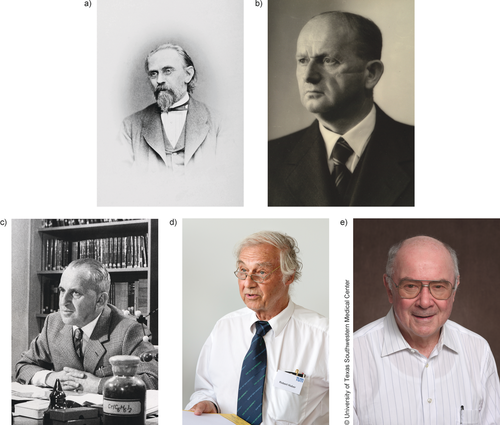
a) Emil Erlenmeyer (1825–1909), first chemistry professor at today's TUM from 1868–1883 (Erlenmeyer flask; structural chemistry: Erlenmeyer Rule, naphthalene, guanidine, tyrosine), student of Justus von Liebig. b) Hans Fischer (1881–1945), Nobel Prize in Chemistry 1930 (blood and plant dyes, synthesis of hemin). c) Ernst Otto Fischer (1918–2007), Nobel Prize in Chemistry 1973 (organometallic sandwich compounds). d) Robert Huber (born 1937) and e) Johann Deisenhofer (born 1943), Nobel Prize in Chemistry 1988 (structural elucidation of the 3D structure of the reaction center of a purple bacterium).



